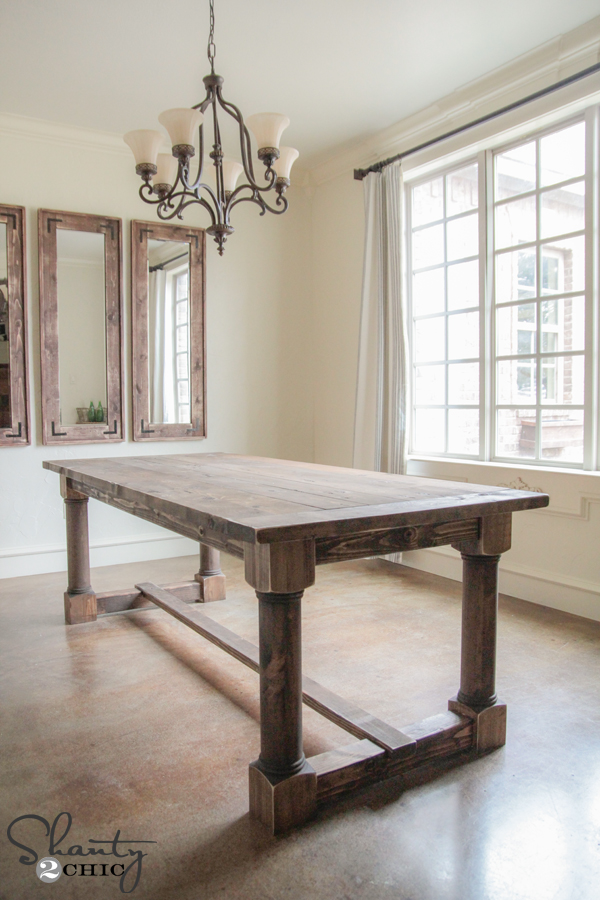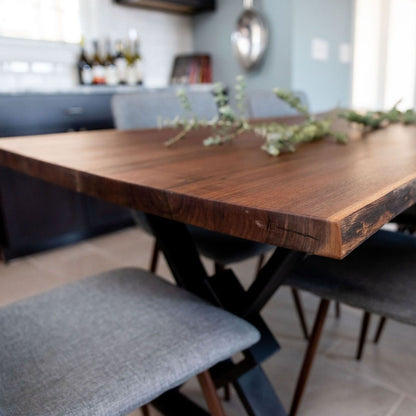The Top Trends in Dining Room Table Legs You Need to Know
The Top Trends in Dining Room Table Legs You Need to Know
Blog Article
From Typical to Modern: Locate the Perfect Dining-room Table Legs for Your Design
While timeless designs such as cabriole and transformed legs stimulate a sense of classic sophistication, modern designs like hairpin and geometric choices present a possibility for striking visual interest. As you think about these components, the concern stays: just how can you seamlessly integrate these diverse leg designs to develop a harmonious dining experience?
Recognizing Table Leg Styles
The variety of dining area table leg designs can significantly influence both the aesthetics and functionality of the space. Each leg style contributes unique visual aspects and sensible attributes, dealing with diverse style choices and use needs. Understanding these styles is crucial for selecting the best dining table that lines up with your general interior decoration vision.
For circumstances, tapered legs provide a clean, timeless appearance that can boost a space's beauty, while pedestal bases give security and make the most of legroom, making them optimal for smaller rooms. Hairpin legs, a hallmark of mid-century modern-day style, introduce a commercial style, permitting a ventilated, open feeling. Trestle legs evoke rustic charm, giving robust support and a feeling of timelessness.
Furthermore, the choice of products plays a substantial duty. Wooden legs can bring warmth and texture, whereas steel choices typically share a smooth, contemporary vibe. Inevitably, recognizing table leg designs is vital for creating a natural eating area that reflects individual design while making certain functionality and comfort. By thoughtfully taking into consideration these elements, you can improve both the visual and functional charm of your eating space.
Typical Table Leg Options
When selecting dining space table legs, typical alternatives typically symbolize classic elegance and craftsmanship. These styles show an abundant heritage and a dedication to quality, making them excellent for those that appreciate timeless looks.
Among one of the most legendary traditional leg styles is the cabriole leg, characterized by its graceful curved shape. This design frequently features decorative carvings and is most frequently located in Queen Anne and Chippendale furniture. One more prominent alternative is the transformed leg, which flaunts a series of smooth, rounded shapes that offer a timeless look while preserving security.
In addition, the straight leg, while easy, offers a basic and tough framework that can mix seamlessly with a range of tabletop styles. For those drawn to ornate detailing, claw-and-ball feet legs stimulate a feeling of splendour and can function as a spectacular prime focus in any kind of eating area.
Lastly, stand bases, although not purely legs, offer an alternative typical alternative that enables for sufficient legroom and can be magnificently sculpted. Each of these standard leg designs adds to the total atmosphere of a dining-room, marrying feature with visual appeal.

Modern Table Leg Layouts
Modern table leg styles offer a varied range of designs that emphasize innovative products and tidy lines. These styles often focus on functionality while acting as striking focal factors within a dining room. Minimalist aesthetics are common, with legs crafted from products such as metal, glass, and crafted wood, which add to a contemporary and ventilated view publisher site feel.
One popular layout is the barrette leg, defined by its slender, conical structure that gives stability without overwhelming the table top (dining room table legs). This design is usually found in mid-century modern-day furnishings and can effortlessly match numerous table shapes. An additional trend is the use of geometric forms, where legs might take on angular or asymmetrical types, including aesthetic passion and a touch of artistry

Mixing Styles for One-of-a-kind Rooms
Often, homeowners look for to develop special dining spaces that reflect their individual design by blending various layout aspects. This method permits the incorporation of varied aesthetics, causing an unified yet unique environment. For circumstances, combining a rustic wooden table with sleek, modern-day metal legs can create an attractive comparison that raises the room's total charm.
In addition, integrating vintage table legs with contemporary tabletops can stimulate a sense of background while preserving a modern sensibility. Such mixes not only display individual taste but likewise encourage creative thinking, allowing home owners to curate a space that really feels both personal and welcoming.
Color plays a crucial function in this mixing process; view publisher site choosing table legs that complement or contrast with the existing shade system can improve visual rate of interest. For instance, whitewashed legs can soften the boldness of a dark table surface area, developing a balanced aesthetic.
Tips for Choosing the Right Legs
Choosing the right table legs is important for accomplishing both capability and aesthetic charm in your eating room. Begin by thinking about the total design of your room. Conventional setups take advantage of legs that include intricate carvings or transformed layouts, while modern spaces may require streamlined, minimal designs.
Next, assess the height and stability of the legs. dining room table legs. Common eating tables vary in between 28 to 30 inches in height, so guarantee the legs match this measurement for comfort. In addition, durable products, such as hardwood or metal, can enhance stability and durability
Examine the leg form also-- alternatives consist of right, tapered, or stand styles. Straight legs use a timeless appearance, while conical legs can include look here a touch of sophistication. Pedestal bases supply adequate legroom and are excellent for smaller sized rooms.
Verdict
In recap, choosing the suitable dining-room table legs calls for mindful factor to consider of both standard and contemporary styles. Traditional alternatives such as cabriole and transformed legs use ageless beauty, while modern designs like barrette and geometric shapes offer a contemporary touch. By integrating leg design, height, and material with the general design, a natural and welcoming environment can be achieved. Inevitably, the chosen table legs need to mirror the wanted aesthetic, improving the eating experience within the room.
The variety of eating room table leg designs can considerably affect both the appearances and performance of the space. Eventually, understanding table leg designs is important for developing a cohesive eating area that shows individual style while making certain practicality and convenience.One of the most iconic standard leg designs is the cabriole leg, characterized by its elegant curved shape. Straight legs supply a classic look, while conical legs can add a touch of sophistication.In recap, choosing the excellent dining space table legs calls for careful consideration of both contemporary and typical styles.
Report this page